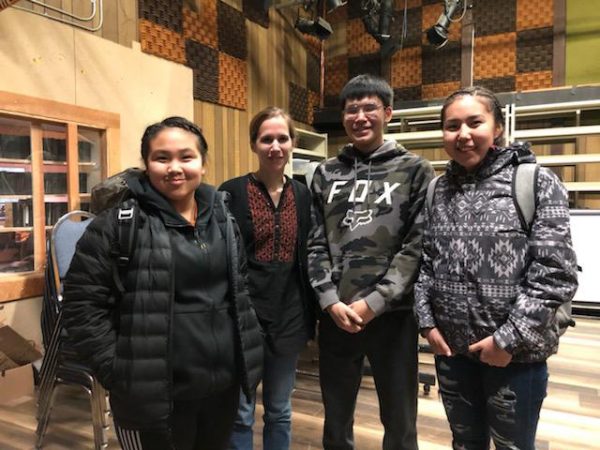
Within an hour of stepping foot in Huslia, Catharine Axley found herself on a snowmachine behind a team of sled dogs.
“Up until that point I hadn’t thought it could, oh my gosh, be so fun,” Axley said.
The year was 2014, and Axley was in the hometown of the legendary Athabascan musher to make a documentary about Attla for her graduate degree from Stanford. She first read about him in an newspaper article when visiting Alaska for another story.
Axley stutters a little when she talks, especially when she’s feeling strong emotion. So when she called Attla to pitch him this documentary, she had a little trouble.
“First time being on the phone with George, I felt totally starstruck. I had been reading about him and watching his clips. And hearing his voice on the other line, and on the phone I get really nervous, I was probably not able to get many words out,” Axley said.
But Attla was game for it. He liked the idea of telling his story to kids so that they would be interested in mushing one day. The film would focus on Attla training his grandnephew, Joe Bifelt, for the Fur Rendezvous race in Anchorage, and would dig into Attla’s 50-year legacy as a champion sprint musher and his journey to get there.
Attla had survived tuberculosis as a child, which left him with a stiff leg. But he persevered, winning multiple world championships and teaching the next generation to love mushing. He wanted to make sure the sport stayed alive in Alaska Native villages.
It’s expensive to make a film like this. Axley was a student at the time, so she was able to use Stanford’s video equipment, but she needed money to fly to Alaska. She raised funds on Kickstarter. Her cold weather gear came from people willing to loan it to her. Axley spent a year filming George, immersing herself in the Huslia social scene and learning when to turn on the camera and when to turn it off.
“He was so curious. For an 80 year old to be so curious, we would have late night conversations, just hours and hours talking about the past, the present, and the future,” Axley said.
A couple things happened just as Axley was wrapping up filming. Attla died from bone cancer in 2015, and Bifelt’s race in Anchorage was canceled because there wasn’t enough snow. But Bifelt set his sights on another race the following month, and so Axley managed to see him finish what he had started under Attla. In order to complete her project, though, she had to actually put the film together.
“Trying to edit a film that you’re seeing someone who just passed away was really, really hard,” Axley said.
Attla’s story stuck with her.
“In order to understand the significance of George Attla training his grand-nephew for this race in the year 2015, you had to learn George’s story, and you also had to learn the history of dog mushing and of dog races in Alaska over the past 60 years,” Axley said.
Axley raised more money, and returned to the archives and Attla’s family members to learn more about him. She had to balance the work with other jobs to pay the bills. Five years later, she finally finished the feature-length documentary. It showed at the Alaska Federation of Natives annual convention this year, and has made its way to Bethel, the home of 2019 Iditarod Champion Pete Kaiser and the Kuskokwim 300 sled dog race, which Attla competed in at least twice.
Axley now teaches at the University of Kentucky in Lexington, Kentucky, and has a couple of documentary ideas that she wants to pursue. She hopes that some of them will lead her back to Alaska.
The documentary airs on PBS Dec. 16.




